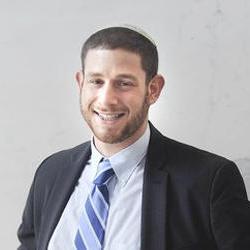The Poetry of Sinai

במדבר רבה א:ז
וידבר ה׳ אל משה במדבר סיני למה במדבר סיני מכאן שנו חכמים בג׳ דברים ניתנה התורה באש ובמים ובמדבר באש מנין (שמות יט) והר סיני עשן כולו וגו׳ ובמים מנין שנאמר (שופטים ה) גם שמים נטפו גם עבים נטפו מים ובמדבר מנין וידבר ה׳ אל משה במדבר סיני ולמה ניתנה בג׳ דברים הללו אלא מה אלו חנם לכל באי העולם כך דברי תורה חנם הם שנאמר (ישעיה נה) הוי כל צמא לכו למים ד״א וידבר ה׳ אל משה במדבר סיני אלא כל מי שאינו עושה עצמו כמדבר הפקר אינו יכול לקנות את החכמה והתורה לכך נאמר במדבר סיני
Numbers Rabbah 1:7
“. . .The Lord spoke to Moses in the wilderness of Sinai. . .” (Num. 1:1). Why “in the wilderness of Sinai?” Our Sages taught that the Torah was given in three ways: through fire, through water, and through the wilderness. “Through fire”—how is this derived? [From the verse,] “Now Mount Sinai was all in smoke, for the Lord descended upon it in fire. . .” (Exod. 19:18). “Through water” — how is this derived? As it is said, “. . .The heavens dripped, yea, the clouds dripped water. . .” (Judg. 5: 4). “Through wilderness” — how is this derived? [From the verse,] “. . .The Lord spoke to Moses in the wilderness of Sinai. . .”
Why was the Torah given in these three ways? Just as these are free to all creatures, so too are the words of the Torah free, as it is said, “Ho, all who are thirsty, come for water, [even if you have no money. . .]” (Isa. 55:1)
Another interpretation of ” . . .The Lord spoke to Moses in the wilderness of Sinai. . . “: Anyone who does not make oneself open to all [lit. “ownerless”] like a wilderness cannot acquire wisdom and Torah; thus it could be said, “. . .in the wilds of Sinai.”
I rarely encounter texts like the midrash above that so completely challenge static notions about Torah. This midrash, instead, presents Torah as a transformative force that also requires its audience to transform itself radically in order to receive it.
Before one can begin to appreciate the first half of this midrash, one must face the radical assertion of its latter half regarding one’s openness to new ideas or experiences. By stating that one must “make oneself open to all like a wilderness,” the midrash presents the desert as a metaphor for a spiritual state of being that is untamed, boundless, beyond our ordinary realm. We must enter the “wilds of Sinai” in order to internalize the wisdom we wish to acquire.
Once we have taken that extraordinary step, we are prepared to move beyond the Sinai story we generally read and tell. Instead, the process described above—of God’s giving the Torah—expands revelation into a dynamic multimedia experience beyond the written text and it becomes immediately accessible to anyone today. We know how flames and rainfall both represent physical changes in nature and generate sensations and emotional reactions that we perceive internally. Likewise, the desert environment becomes a medium for spiritual metamorphosis by testing our physical limits through its desolation, dryness, and heat.
The subsequent poetic depiction of Torah as priceless water that quenches our thirst complements the previous statements well and resonates with me deeply. That metaphor aptly describes what drew me to study both our classical texts and Jewish meditation. Nonetheless, my rabbinic training definitely cost money—a lot of it. We thus uncover again a most difficult task: since Torah was initially given in ways “free to all creatures,” we must keep dreaming of and working toward providing high-quality Jewish learning experiences in ways that are affordable to all. Achieving such a vision will truly transform Judaism and the world.



